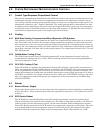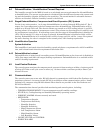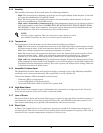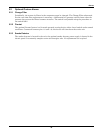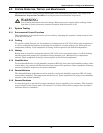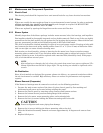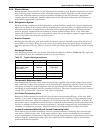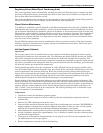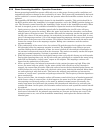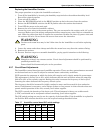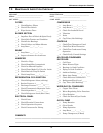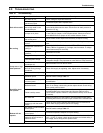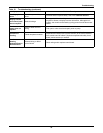
System Operation, Testing, and Maintenance
53
Regulating Valves (Water/Glycol Condensing Units)
The water regulating valve automatically regulate the amount of fluid necessary to remove the heat
from the refrigeration system, permitting more fluid to flow when load conditions are high and less
fluid to flow when load conditions are low.
The water regulating valve is designed to begin opening at 180 psi (1240 kPa) and be fully opened at
240 psi (1655 kPa). The valve is factory set and should not need adjustment.
Glycol Solution Maintenance
It is difficult to establish a specific schedule of inhibitor maintenance since the rate of inhibitor deple-
tion depends upon local water conditions. Analysis of water samples at time of installation and every
six (6) months should help to establish a pattern of depletion. A visual inspection of the solution and
filter residue is often helpful in judging whether or not active corrosion is occurring. The complexity of
problems caused by water requires expert advice from a water treatment specialist plus a regular
maintenance program schedule. It is important to note that improper use of water treatment chemi-
cals can cause severe problems.
Proper inhibitor maintenance must be performed in order to prevent corrosion of the glycol system.
Consult your glycol manufacturer for proper testing and maintenance procedures. Do not mix prod-
ucts from different manufacturers.
Hot Gas Bypass (Optional)
Operation
The hot gas bypass valve is installed between the compressor discharge piping and suction piping,
bypassing the condenser and evaporator coils. The discharge gas mixes with the suction gas, raising
the suction temperature and pressure and decreasing the mass flow through the evaporator. The
higher suction temperatures could cause compressor overheating, therefore a separate liquid quench-
ing valve is provided to mix refrigerant from the system liquid line with the discharge gas before mix-
ing with the suction gas entering the compressor.
During normal operation, when the evaporator is under full load the hot gas bypass equalizer pres-
sure will remain high enough to keep the valve port closed. If the evaporator load decreases, the evap-
orator temperature and pressure will drop. When the suction pressure reduces below the hot gas
bypass valve setting the hot gas bypass valve opens diverting some of the refrigerant flow back to the
compressor suction. The liquid quenching valve bulb senses this increased superheat and opens,
allowing liquid refrigerant to mix with the discharge gas, desuperheating it.
Proper mixing of the three refrigerant paths ensures stable operation and system performance. The
liquid quenching valve bulb must be located downstream of all these connections to control superheat
at the compressor inlet. Superheat settings for the liquid quenching valve are chosen to maintain con-
sistency with the system expansion valve. During hot gas bypass operation higher superheats, 25-
40°F (14-22°C), may be observed at the compressor. The liquid quenching valve is internally equal-
ized and superheat is not adjustable.
Adjustment
1. Install the suction and discharge pressure gauge.
2. Adjust temperature setpoint to call for cooling so that the refrigeration compressor will run
continuously.
3. Remove the TOP adjusting nut from the valve.
4. Insert an Allen wrench in the brass hole at top of valve in adjusting port, and turn CLOCKWISE if a
higher evaporator temperature is required. Adjust no more than 1/4 turn at a time. Let the system
stabilize for 15 minutes before determining if additional adjustment is necessary.
5. After obtaining the suction pressure required, reinstall cap tightly making sure there are no leaks.
6. Let the evaporator operate for approximately 10 to 15 minutes to make sure the suction pressure
is within the range desired.
7. There may be a fluctuation of approximately 3 to 6 psig (21 to 41 kPa) on the evaporator due to
the differential on the hot gas bypass.
8. Return temperature setpoint to the desired setting.



